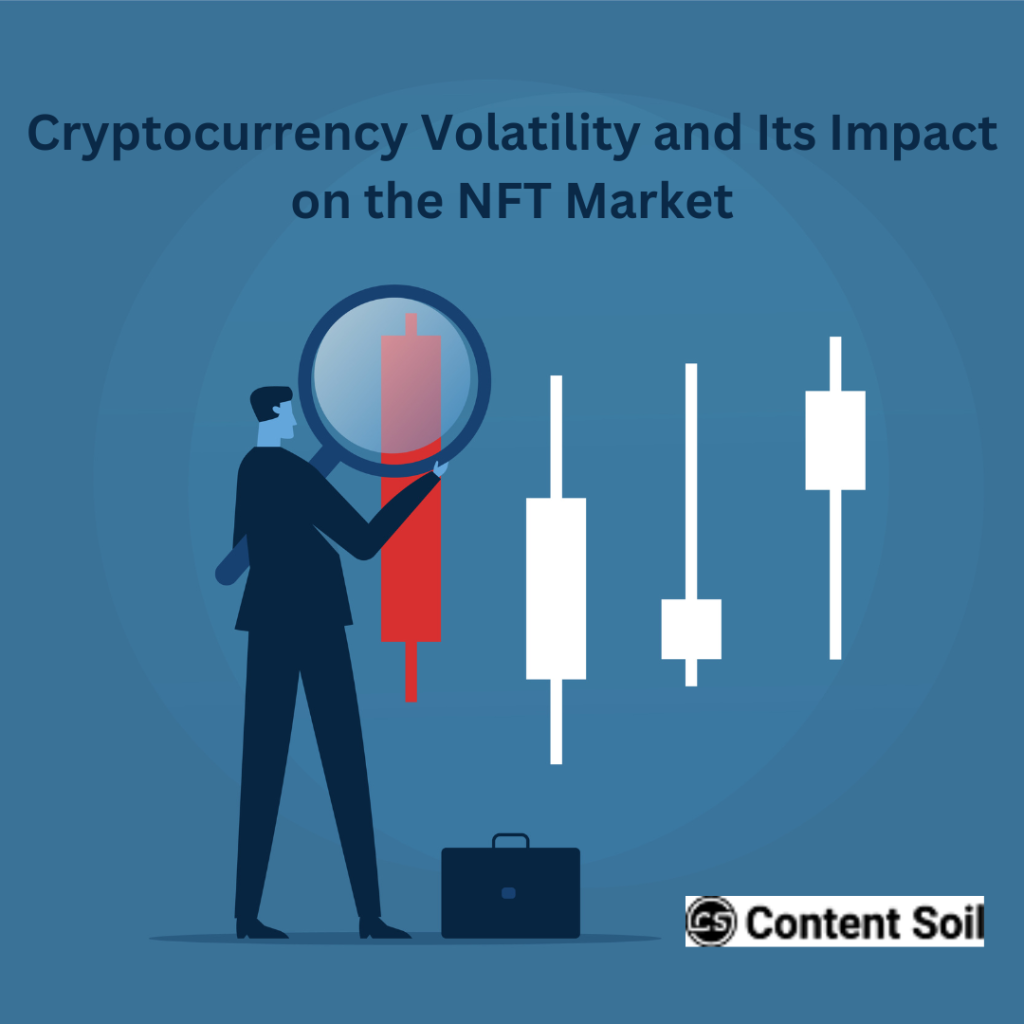Introduction:
Cryptocurrency volatility refers to the rapid and unpredictable price fluctuations that are characteristic of digital currencies such as Bitcoin, Ethereum, and other altcoins. This inherent volatility has been both a defining feature and a major concern within the cryptocurrency ecosystem, particularly as it extends its influence to non-fungible tokens (NFTs). NFTs are unique digital assets that represent ownership of a specific item, artwork, or collectible on the blockchain. The interplay between cryptocurrency volatility and the NFT market has significant implications for creators, investors, and the broader blockchain-based economy.
Understanding Cryptocurrency Volatility
Cryptocurrencies, being relatively young and decentralized assets, are influenced by a complex array of factors that contribute to their volatile nature. These factors include regulatory changes, technological developments, macroeconomic events, market sentiment, and even individual influencers’ statements on social media. Unlike traditional financial markets, cryptocurrencies operate 24/7, which can lead to rapid price fluctuations during weekends and holidays when other markets are closed.
Cryptocurrency volatility is characterized by sharp price spikes and dramatic crashes, often occurring within short timeframes. While this volatility can present lucrative opportunities for traders aiming to profit from price swings, it also raises concerns about market stability and the suitability of cryptocurrencies as a reliable store of value.
NFTs and Their Relationship with Cryptocurrency Volatility
NFTs, while a distinct subset of the blockchain ecosystem, are closely intertwined with cryptocurrencies due to their shared underlying technology. NFTs are often bought and sold using cryptocurrencies, primarily Ethereum, which makes them susceptible to the same volatility that affects the broader crypto market. When the value of the cryptocurrency used to purchase or trade NFTs changes rapidly, it directly impacts the NFT market’s perceived value.
The NFT market has witnessed explosive growth, with artists, musicians, game developers, and collectors participating in an entirely new economy of digital ownership. However, this growth comes with inherent risks tied to cryptocurrency volatility. When the value of cryptocurrencies like Ethereum or Bitcoin experiences sudden drops, the perceived value of NFTs denominated in those cryptocurrencies can also plummet. This dynamic can discourage potential buyers and lead to increased uncertainty in the NFT market.
Impact on NFT Creators
Creators in the NFT space often rely on the value of their digital assets to derive income. For artists, musicians, and other content creators, NFTs represent a novel way to monetize their work directly, bypassing traditional intermediaries. However, the value of their earnings can be significantly impacted by cryptocurrency volatility. A piece of digital art that sells for a substantial amount in Ether (ETH) may lose a significant portion of its value if the price of Ether drops suddenly, leading to financial uncertainty for creators.
Investor Perspective and Market Sentiment
Investors in the NFT market are also exposed to the effects of cryptocurrency volatility. Those looking to invest in NFTs, whether for the potential appreciation of the NFT’s value or for its cultural significance, must consider the inherent risks associated with cryptocurrency price volatility. If an investor buys an NFT at a time when cryptocurrencies are at a peak and then experiences a market downturn, the perceived value of their NFT holdings may decline in tandem with the cryptocurrency market.
Market sentiment plays a critical role in the NFT market’s response to cryptocurrency volatility. Positive sentiment can drive demand for NFTs, while negative sentiment can lead to reduced interest and a decline in prices. Both NFT creators and investors closely monitor market sentiment, as it can influence their decision-making and ultimately impact the health of the NFT ecosystem.
Mitigation and Long-Term Outlook
To mitigate the impact of cryptocurrency volatility on the NFT market, various strategies are being explored. One approach is to enable NFT transactions in stablecoins, which are cryptocurrencies pegged to a stable asset like the US Dollar. This can provide a more predictable value for NFTs during times of cryptocurrency market turbulence. Additionally, as the blockchain and cryptocurrency space matures, increased adoption, regulatory clarity, and technological advancements could contribute to reducing overall volatility.
Conclusion:
The relationship between cryptocurrency volatility and the NFT market is multifaceted and interconnected. The extreme price fluctuations characteristic of cryptocurrencies can influence the value and perception of NFTs, impacting both creators and investors. While the potential for high returns exists, the unpredictable nature of the cryptocurrency market raises challenges for stability and broader adoption. As the blockchain ecosystem evolves, finding ways to mitigate these challenges will be crucial for ensuring the long-term success of both cryptocurrencies and NFTs.


